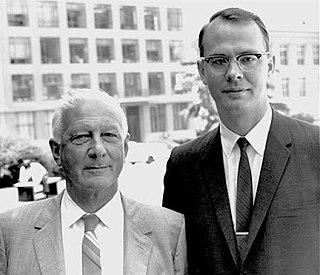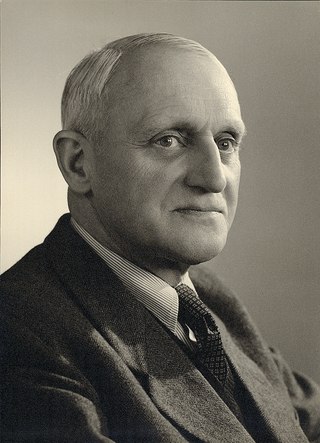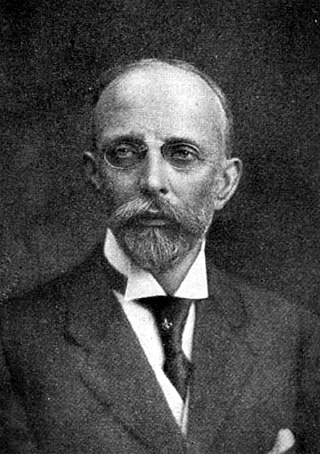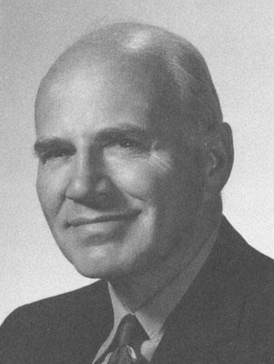
James Walter Douglas was a Canadian born mining engineer and businessman who introduced a number of metallurgical innovations in copper mining and amassed a fortune through the copper mining industry of Bisbee, Arizona Territory and Sonora before and after the turn of the 20th century.

Albert Sauveur was a Belgian-born American metallurgist. He founded the first metallographic laboratory in a university.

Antoine Marc Gaudin was a metallurgist who laid the foundation for understanding the scientific principles of the froth flotation process in the minerals industry. He was also a professor at the Massachusetts Institute of Technology, and during World War II developed there the ore-processing techniques needed to extract uranium from its low grade ores for the Manhattan Project. He was a founding member of the National Academy of Engineering.
The Washington Award is an American engineering award.
The Hoover Medal is an American engineering prize.

Selwyn Gwillym Blaylock was a part of starting the mining industry in western Canada. He was president of Teck Resources, recipient of several international awards for his work in metallurgy, and was the President of the Canadian Institute of Mining, Metallurgy and Petroleum in 1934–35. For his work he was inducted into the Canadian Mining Hall of Fame.
OneMine is non-profit entity and searchable online global mining and minerals library.
Donald Albert Dahlstrom was recognized by the American Institute of Chemical Engineers (AIChE) as one 100 prominent chemical engineers of the modern era, for his work on liquid-solids separation, particularly with respect to the hydrocyclone. He was a professor in the Chemical Engineering Department of the University of Utah, and served as President of the AIChE in 1964.

Robert Durrer (1890–1978) was a Swiss engineer who invented the basic oxygen steelmaking process during his career in Nazi Germany. The process was successfully tested by Durrer in 1948. A team led by Dr Theodor Eduard Suess in Austria adapted the process and scaled it to industrial size, after which it was commercialized by VÖEST and ÖAMG.
The John Fritz Medal has been awarded annually since 1902 by the American Association of Engineering Societies (AAES) for "outstanding scientific or industrial achievements". The medal was created for the 80th birthday of John Fritz, who lived between 1822 and 1913. When AAES was dissolved in 2020, the administration of the Fritz medal was transferred to the American Institute of Mining, Metallurgical, and Petroleum Engineers (AIME), and is currently coordinated by AIME member society, the Society of Mining, Metallurgy, & Exploration (SME).

Charles William Henry Kirchhoff was a United States editor and steel expert.

Robert Woolston Hunt was an American metallurgical engineer, inventor, and superintendent in the steel industry. He is known as president of the American Institute of Mining Engineers in 1883 and 1906; president of the American Society of Mechanical Engineers in the year 1891–92; and president of the Western Society of Engineers in 1893.
The Association for Iron and Steel Technology (AIST) is a non-profit professional organization focused on promoting the international iron and steel industry through networking and education. The AIST has over 17,500 members in over 70 countries, though the majority of its members are from North America, reflecting its historical link to the American Steel industry. The AIST was formed from a merger from two older organizations, the Association of Iron and Steel Engineers and the Iron and Steel Society in 2004. AIST is a member organization of the American Institute of Mining, Metallurgical, and Petroleum Engineers (AIME). The head office of the organization is in Warrendale, Pennsylvania. From these offices is published the monthly Iron and Steel Technology magazine. The Association also runs an international conference each year called AISTech. AIST also offers training courses and local events organized by its various member chapters and technical committees.

The William Lawrence Saunders Gold Medal was first awarded in 1927 and recognizes "distinguished achievement in mining other than coal". The award is funded by the American Institute of Mining, Metallurgical, and Petroleum Engineers and named for William Lawrence Saunders.

John Frank Elliott was an American professor of metallurgy who made significant contributions to the science of pyrometallurgy during his long career at Massachusetts Institute of Technology (MIT).
Hong Yong Sohn is an American engineer, currently a Distinguished Professor in Metallurgical Engineering at the University of Utah.

James Gayley was an American chemist and steel metallurgist who served as managing director of the Carnegie Steel Company, and as the first vice president of U.S. Steel from 1901 to 1908. He is credited with many inventions which greatly improved the fields of steel and iron making. For his contributions in the field of metallurgy, he was awarded the Elliott Cresson Medal in 1909, and the Perkin Medal in 1913.
John Robert Suman was a geologist, petroleum engineer, and business executive.
Thomas Victor Falkie was an American mining engineer and educator. He served as the 14th director of the U.S. Bureau of Mines.

Robert Peele was an American mining engineer. He was an emeritus professor at Columbia University and author of the Mining Engineers' Handbook, which was in print from 1918 to 1989.










